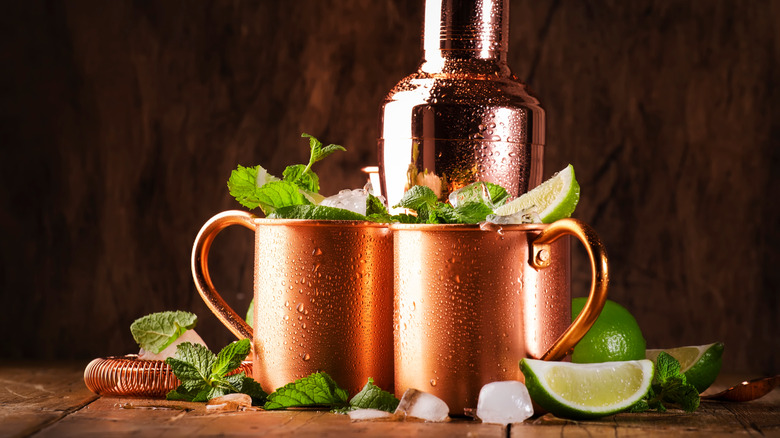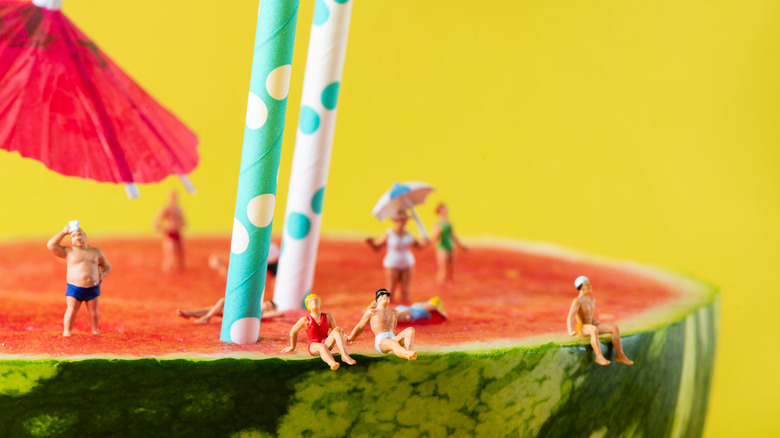How A Mint Julep May Have Inspired A Drinking Straw Industry Revolution
The mystique of a mint julep reaches way back in time, with claims that rudimentary versions of the drink existed well before today's genteel, front-porch-sipping cocktail. The sweetened liquid had dubious medicinal value in earlier generations, serving as a hangover cure, treatment for nausea, or an aid for making medications go down easier, explains Bevvy. But it certainly transformed itself by the 1800s.
It appears in literature and films — hello, Daisy Buchanan in "The Great Gatsby" — as well as classic songs, including Ray Charles' 1961 cover of "One Mint Julep." It's also the traditional Kentucky Derby cocktail; no surprise, since the drink features Bourbon from Kentucky, where most of the world's Bourbon whiskey supply originates, according to CNBC.
Since the mint julep has inspired so many components of American culture, one more connection shouldn't come as a surprise — but it likely will. It has to do with the drinking straw. These days we take this basic drinking implement for granted these days, but just imagine early versions of the straw. In the past straws were constructed out of something far less palatable than the plastic or paper ones now funneling icy cold liquids down our throats, and we have mint julep to thank for the switch, at least in a roundabout sort of way.
From cigarette holder to cocktail companion
Who better than a manufacturer of paper cigarette holders to transform the mechanics of causal drinking straws? Though seemingly incongruous, both were long and cylindrical, which sparked an idea in the mind of Marvin Stone, an American inventor in the 1800s whose factory created paper cigarette holders according to the Lemelson Center of the Smithsonian Institute.
As the story goes, Stone was relaxing with friends after work one evening, enjoying a mint julep cocktail sipped through a traditional straw made of ryegrass. The natural material inevitably deteriorated as it soaked in the liquid, depositing soggy particles in his otherwise delicious mint julep. Inspiration hit, perhaps aided by the Bourbon in his julep, and Stone went on to create the first paper drinking straw.
The prototype was simply paper sheets wrapped around a pencil, which would then be glued together after the pencil was removed. Tembo Paper reveals that Martin settles on a straw length of 8.5 inches to keep imbibers from having their lips touch the rims of their glass, and the width chosen to prevent seeds from cocktail fruits from clogging the straw. The straw's sturdiness came from Filipino Manila hemp, known for its durability in fishing nets and other marine applications. Stone eventually patented his paper drinking straw in 1888.
Within a few years, Stone had revolutionized the drinking straw industry, his company producing as many as two million paper straws per day. Though his invention fell prey to plastic manufacturing for several decades, today's enlightenment over plastic's environmental impacts has reignited a liquid love affair with paper straws.

